How do I prepare a digital image using Microsoft Photo Editor (imaging software bundled with Microsoft Office) for use on the web?
If you have a digital image from a digital camera, have scanned in an image with a scanner, or have had photos scanned into cd-rom; you will realise that these images are too big to insert into a web page and in some cases will not be visible in a browser.
This help page will allow you to prepare a digital image using Microsoft Photo Editor (imaging software bundled with Microsoft Office) for use on the web.
Start Microsoft Photo Editor
![]()
You can usually find it in the Microsoft Office Tools folder
You will find the normal workspace.
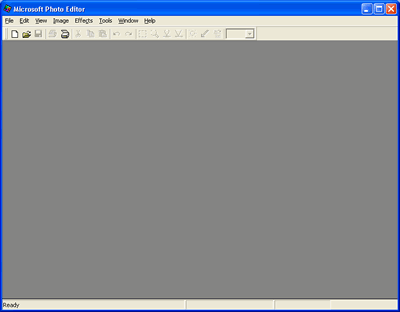
You will need to open your digital image, so you will need to remember where you saved it, My Pictures for example.
File -> Open
and select your digital image and click the Open button.
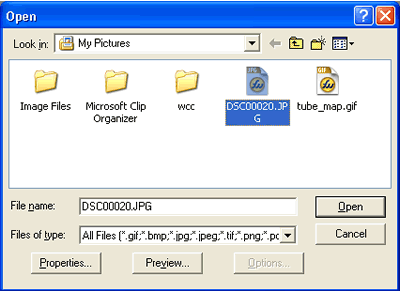
Having opened your image, you may find that the “zoom” has changed, making the image appear the “right” size. It isn't, in this case we have a zoom of 25%.
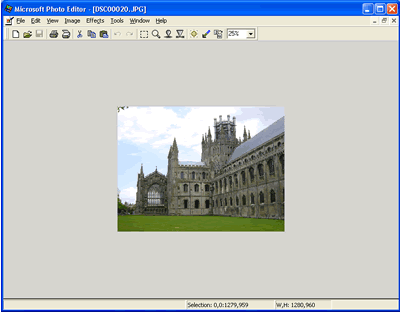
View -> Zoom...
This will bring up the following dialogue box.
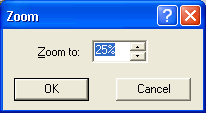
Change the value to 100%

You will find your image has been resized to the actual size, and as you can see it is too big to fit into a browser window.

The first thing to do is to change the image size so that
it will fit within the browser window.
The following sizes are only guides and recommendations.
Type of Image Size
Large images – the only image on the page 600 x 400
Smaller images – a main image with some text 300 x 200
Small image – mainly text with an image 200 x 133 or smaller
Any image file should be smaller than 15Kb unless it is a large picture in which case you should avoid anything larger than 35Kb. For more information on the difference in file sizes, read this page.
In this example, we are going to resize the image to 300 x 200.
Image -> Resize...
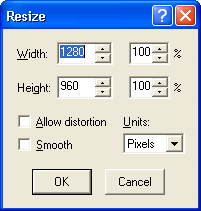
Ensure that the Allow distortion check box is not ticked and that the Units are Pixels, and change the horizontal Pixels Dimensions to 300.
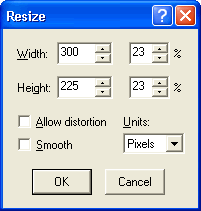
You will see that the vertical dimensions are now 225 (which though not 200) is fine.
Click OK and you will now find your image is smaller.
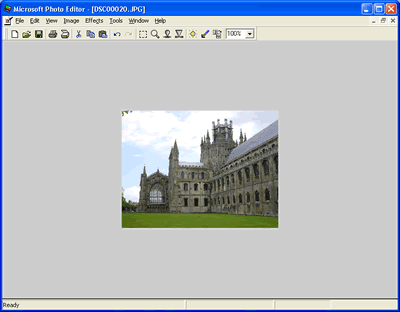
You now need to save the image so that it is in the right format for the web.
If the image is a photograph you should use JPEG (.jpg)

If the image is a graphic, text, has sharp edges then you
should use GIF (.gif).

File -> Save As

Ensure that the Save as type is either JPEG or Graphics Interchange Format (GIF).
Click the More >> butoon
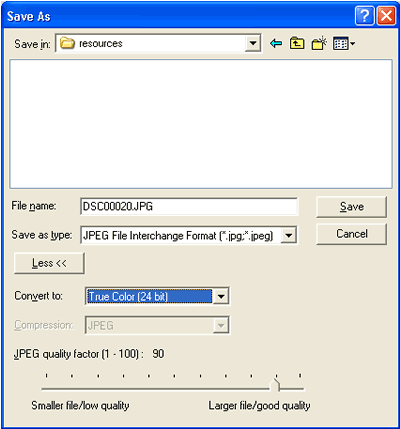
You will need to change the JPEG quality factor (1-100) from the default value of 90 to for large images 40, or in this example, 60.
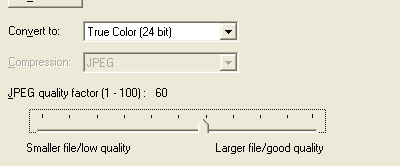
Click Save
You can now close Microsoft Photo Editor down.
Important
Do not save any changes to your original image file.

